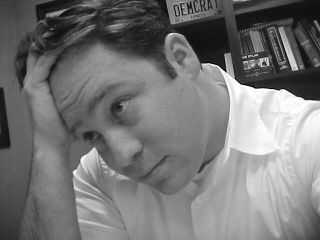well this is pretty bad...
BAGHDAD, Iraq, Oct. 24 - The Iraqi interim government has warned the United States and international nuclear inspectors that nearly 380 tons of powerful conventional explosives - used to demolish buildings, produce missile warheads and detonate nuclear weapons - are missing from one of Iraq's most sensitive former military installations.now add to that the fact that insurgents ambushed and killed 50 iraqi security soldiers yesterday and you can see where we're heading this week. not looking good.
The huge facility, called Al Qaqaa, was supposed to be under American military control but is now a no-man's land, still picked over by looters as recently as Sunday. United Nations weapons inspectors had monitored the explosives for many years, but White House and Pentagon officials acknowledge that the explosives vanished after the American invasion last year.
The White House said President Bush's national security adviser, Condoleezza Rice, was informed within the past month that the explosives were missing. It is unclear whether President Bush was informed. American officials have never publicly announced the disappearance, but beginning last week they answered questions about it posed by The New York Times and the CBS News program "60 Minutes."
Administration officials said yesterday that the Iraq Survey Group, the C.I.A. task force that searched for unconventional weapons, has been ordered to investigate the disappearance of the explosives.
American weapons experts say their immediate concern is that the explosives could be used in major bombing attacks against American or Iraqi forces: the explosives, mainly HMX and RDX, could be used to produce bombs strong enough to shatter airplanes or tear apart buildings. The bomb that brought down Pan Am Flight 103 over Lockerbie, Scotland, in 1988 used less than a pound of the material of the type stolen from Al Qaqaa, and somewhat larger amounts were apparently used in the bombing of a housing complex in November 2003 in Riyadh, Saudi Arabia, and the blasts in a Moscow apartment complex in September 1999 that killed nearly 300 people.
The explosives could also be used to trigger a nuclear weapon, which was why international nuclear inspectors had kept a watch on the material, and even sealed and locked some of it. But the other components of an atom bomb - the design and the radioactive fuel - are more difficult to obtain. "This is a high explosives risk, but not necessarily a proliferation risk," one senior Bush administration official said.

No comments:
Post a Comment